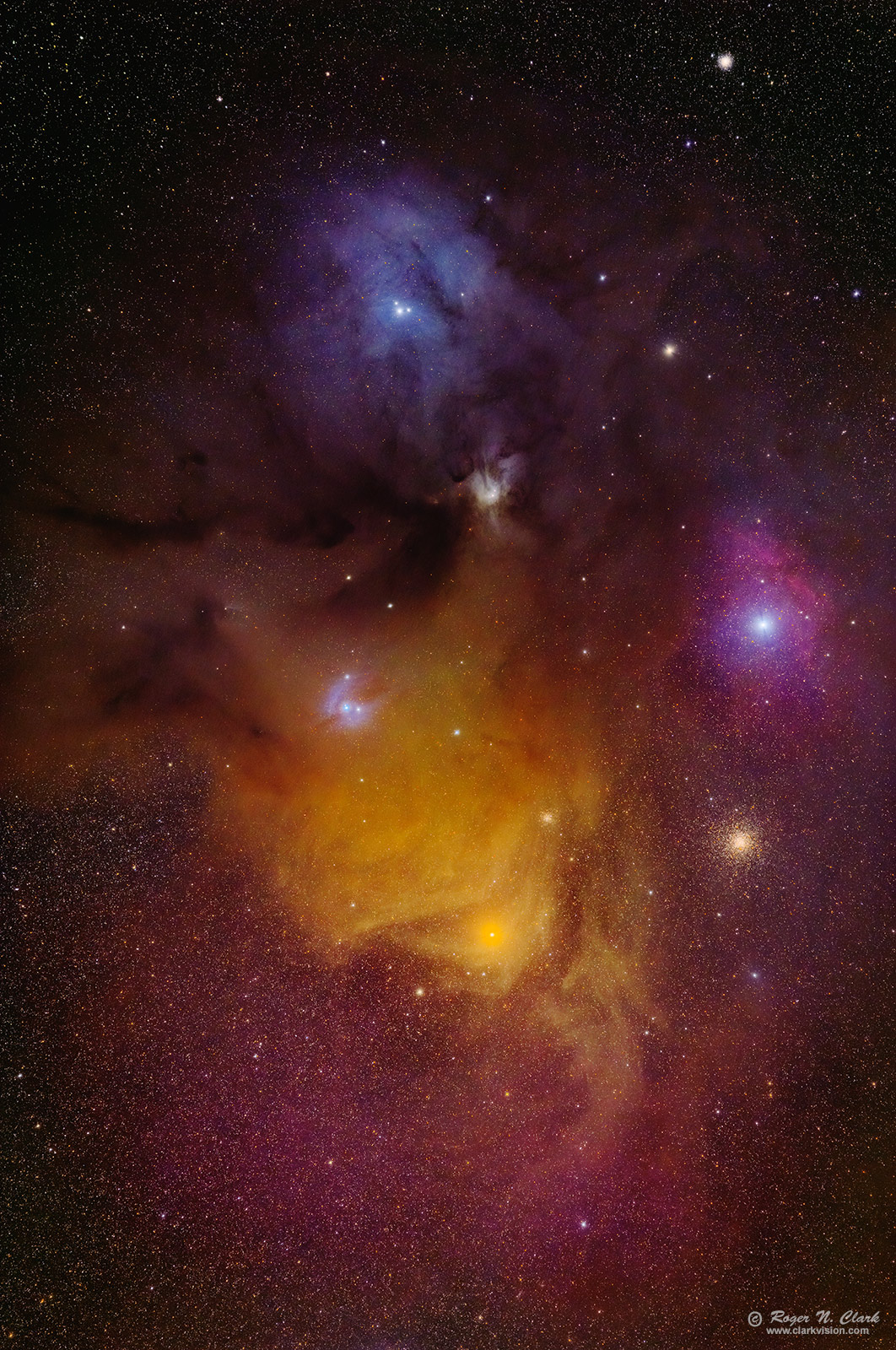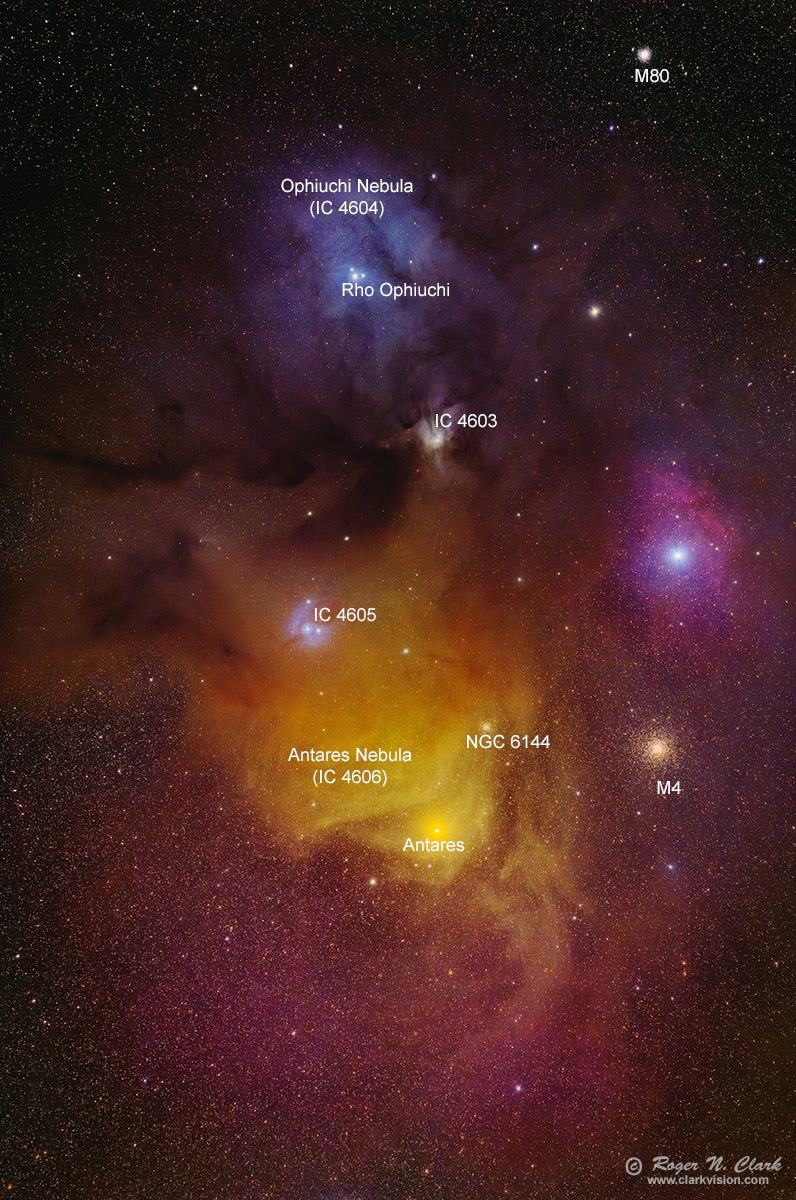| Home | Galleries | Articles | Reviews | Best Gear | New | About | Contact | Gallery Index | Previous |
Next |

| Home | Galleries | Articles | Reviews | Best Gear | New | About | Contact | Gallery Index | Previous |
Next |

The Rho Ophiuchi cloud complex is a star forming region of interstellar clouds, a little over 400 light years distant. The star Antares with fine particles in the cloud result in a blue reflection nebula. The Antares nebula is illuminated by the orange star Antares, a red supergiant, and the dust particles must be large compared to the Ophiuchi nebula. The globular star cluster M4 is to the right, below center. The globular star cluster M80 is near the top edge, right of center. Both these clusters are beautiful views in amateur telescopes. NGC 6144 is another globular cluster (see guide below). The reddish-pink nebulae are hydrogen emission nebula.
The image is natural color. Star color is close to what we would see with our eyes in telescopes: solar type stars are white, cooler stars yellow to orange and red, and stars hotter than our Sun are bluish-white.
Technical. This image was obtained with a stock Canon EOS R5 Mirrorless Digital Camera and Canon 300 mm f/2.8 L IS II lens. Total exposure time was 50.5 minutes (101 30-second exposures) at ISO 1600. This is a natural color image. Post processing: raw conversion with Photoshop ACR stacking with deep sky stacker, Stretched with rnc-color-stretch, and final adjustments in photoshop. No darks, no flats, no bias frames measured (bias is in the camera EXIF data and a flat field is in the ACR lens profile and corrected during raw conversion). Dark current is suppressed. This is a highly calibrated image with color managed workflow. The exposures were tracked on a Fornax Lighttrack II mount with no guiding.
Original plate scale is 3.0 arc-seconds/pixel and this image is shown at about 1/5 resolution 14.4 arc-seconds/pixel.
This is a natural color image.
The Exposure Factors, CEF, CEFA are measures of the relative amounts of light received from a subject. It can be used to fairly compare wildly different lens/telescope apertures and exposure times. For this image on the sky:

Modern digital cameras like the Canon R5 include on sensor dark current suppression technology and low fixed pattern noise at ISOs around 800 and higher, making no need for dark frame subtraction. Modern raw converters correct for light fall-off and also correct for hot/dead/stuck pixels. This makes processing low light images easy: simply align and average.
Also see Astrophotography Image Processing Basic Work Flow.
To learn how to obtain stunning images like this, please visit my Extensive Articles on Photography .
Keywords to this image = astrophoto-1 nebula star_cluster low-light digital_astro canon_r5 rnc-color-stretch
Image ID: rho-ophiuchus-rnclark-300mm-c07-2022-4C3A8827-927-av101.i-1600vs.jpg
| Home | Galleries | Articles | Reviews | Best Gear | Science | New | About | Contact |
Last updated November 03, 2025